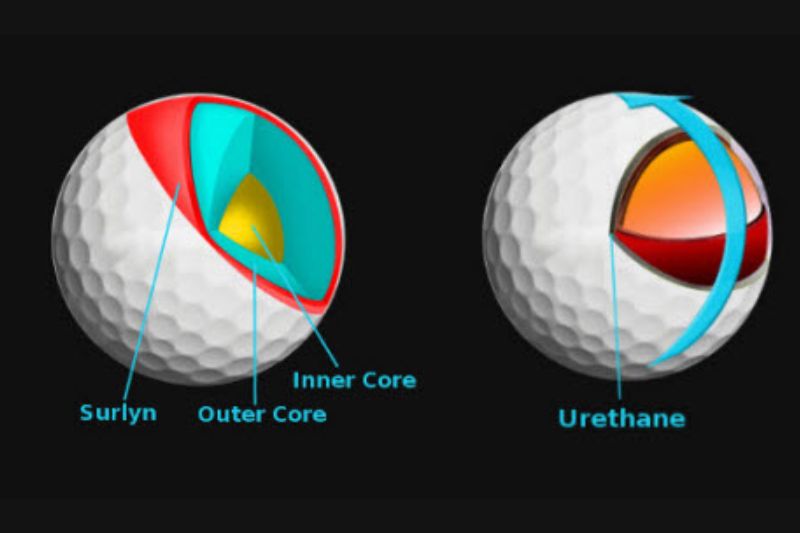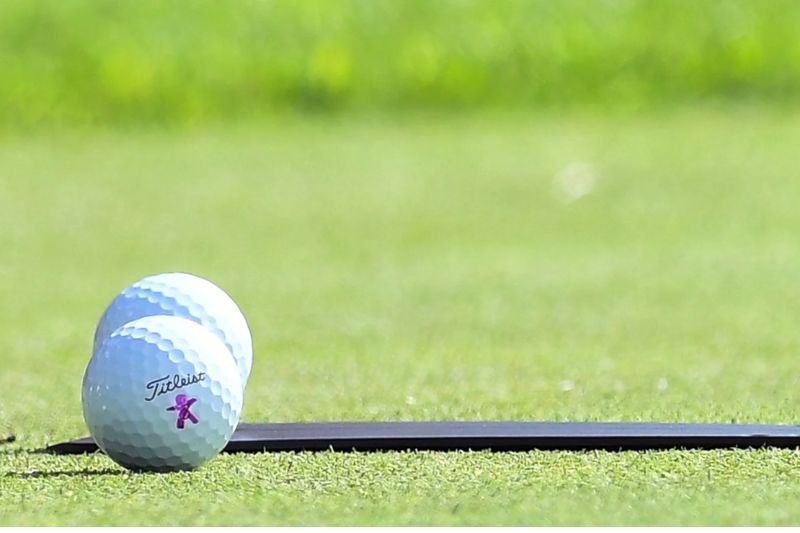Choosing the right golf ball can feel like finding a needle in a haystack, especially with the vast array of options available today. As an avid golfer, I’ve spent countless hours researching and testing different balls, and I can tell you that the right choice can significantly impact your game. In this article, I’ll guide you how to pick the right golf ball, ensuring you find the perfect match for your playing style.
Understanding Golf Ball Construction

Golf balls are not just round objects; they are engineered with precision. Understanding the construction of a golf ball is crucial to making an informed choice.
Core Types
The core of a golf ball is where the magic begins. There are typically two types of cores:
- Soft Core: These cores provide a softer feel and are often preferred by players who prioritize control and feel around the greens.
- Hard Core: Harder cores are designed for distance and speed, making them suitable for players with faster swing speeds.
Cover Materials
The cover of a golf ball affects its durability and spin characteristics. The common materials used include:
- Surlyn: Known for its durability, Surlyn covers are often found on distance balls and are less prone to scratches.
- Urethane: This material offers better spin and control, making it a favorite among skilled players who want precision around the greens.
Layers
Golf balls come in various layers, affecting their performance:
- Two-Piece Balls: These are typically more durable and designed for maximum distance, making them ideal for beginners.
- Three-Piece Balls: Offering a balance between distance and control, these balls are suitable for intermediate players.
- Four-Piece Balls: These are designed for advanced players seeking maximum control and spin.
How to pick the right golf ball?

When it comes to selecting the right golf ball, several factors come into play. Here’s what you should keep in mind:
Your Skill Level
Your skill level is one of the most significant factors in choosing a golf ball.
- Beginner: If you’re just starting, opt for a two-piece ball that offers durability and distance.
- Intermediate: As you improve, consider a three-piece ball that provides a balance of distance and control.
- Advanced: For seasoned players, a four-piece ball can enhance your game with better spin and feel.
Swing Speed
Your swing speed plays a crucial role in determining the right ball for you.
- Slow Swing Speed: If your swing speed is below 85 mph, look for softer balls that compress easily, allowing for better distance.
- Moderate Swing Speed: For swing speeds between 85-105 mph, a medium-compression ball will likely suit you best.
- Fast Swing Speed: If you swing above 105 mph, opt for a harder ball that can withstand the force and maximize distance.
Playing Style
Your playing style can also influence your choice of golf ball.
- Distance Hitter: If you prioritize distance, look for balls designed for maximum length, typically two-piece models.
- Control Player: If you focus on precision and control, consider a higher-end urethane ball that offers better spin.
Course Conditions
The type of course you play on can affect your choice of golf ball.
- Firm Fairways: If you’re playing on firm courses, a ball with a softer feel may help you achieve better control.
- Wet Conditions: In wet conditions, a ball with a firmer cover can help you maintain distance and prevent excessive spin.
How to Test Golf Balls

Testing golf balls is a great way to find the right fit for your game. Here’s how you can do it effectively:
On-Course Testing
The best way to test a golf ball is to play a round with it. Pay attention to how it feels during various shots:
- Drives: Note the distance and feel off the tee.
- Approach Shots: Assess how well the ball holds the green and its spin characteristics.
- Short Game: Evaluate the feel and control around the greens.
Indoor Testing
If you can’t get to the course, consider using a launch monitor. These devices can provide valuable data on:
- Ball Speed: How fast the ball travels off the clubface.
- Spin Rate: The amount of spin you generate on different shots.
- Launch Angle: The angle at which the ball leaves the club.
Popular Golf Ball Brands
There are several well-known brands in the golf ball market, each offering unique options. Here are a few that stand out:
Titleist
Titleist is synonymous with quality and performance. Their Pro V1 and Pro V1x balls are favored by many professionals for their exceptional feel and control.
Callaway
Callaway offers a range of balls, including the Chrome Soft, which is known for its soft feel and excellent spin around the greens.
TaylorMade
TaylorMade’s TP5 and TP5x balls are designed for players seeking maximum distance and control, making them popular among low-handicap golfers.
Maintenance Tips for Golf Balls
To ensure your golf balls perform at their best, consider these maintenance tips:
Cleaning Your Balls
Regularly cleaning your golf balls can help maintain their performance. Use a soft cloth and warm water to remove dirt and debris. Avoid using harsh chemicals or abrasives, as they can damage the ball’s cover.
Some effective cleaning methods include:
- Soaking the balls in a mixture of warm water and mild soap for 30 minutes, then scrubbing with a soft-bristled brush
- Using a dishwasher (without heated drying) to clean the balls
- Applying a small amount of rubbing alcohol, acetone, or nail polish remover to a cotton ball to remove permanent marker lines
- Be sure to rinse the balls thoroughly after cleaning to remove any residual soap or cleaning solution.
Storage
Store your golf balls in a cool, dry place to prevent them from becoming damaged. Avoid leaving them in extreme temperatures, as this can affect their performance.
Some tips for proper storage:
- Keep balls away from direct sunlight and heat sources
- Avoid storing them in damp conditions, as moisture can cause the balls to lose performance
- Use clear plastic jars, egg containers, or other storage solutions to keep balls organized and protected
- Consider storing balls in a mesh bag or pillowcase to prevent damage during storage
Conclusion
Choosing the right golf ball is a personal journey that can significantly enhance your game. By considering factors such as your skill level, swing speed, playing style, and course conditions, you can find the perfect ball that complements your unique playing style. Remember to test different options and don’t hesitate to experiment until you find the one that feels just right.
FAQs
1.What is the best golf ball for beginners?
For beginners, a two-piece ball is often recommended due to its durability and distance capabilities.
2. How do I know my swing speed?
You can determine your swing speed by using a launch monitor or by visiting a local golf shop that offers swing analysis.
3. Are expensive golf balls worth it?
Expensive golf balls often provide better performance, especially for advanced players who can utilize their features effectively.
4. Can I use colored golf balls?
Yes, colored golf balls are perfectly acceptable and can make it easier to spot your ball on the course.
5. How often should I replace my golf balls?
Replace your golf balls when they show signs of wear, such as cuts or scuffs, or if you notice a decrease in performance.

I am the owner of Ricks Golf Shop, a popular destination for golf enthusiasts. My passion for golf began in my teenage years and has only grown over the years. With over 10 years of experience in the golf industry, I offer expert advice and quality products. With a friendly demeanor and extensive knowledge, I ensure every customer leaves happy.
